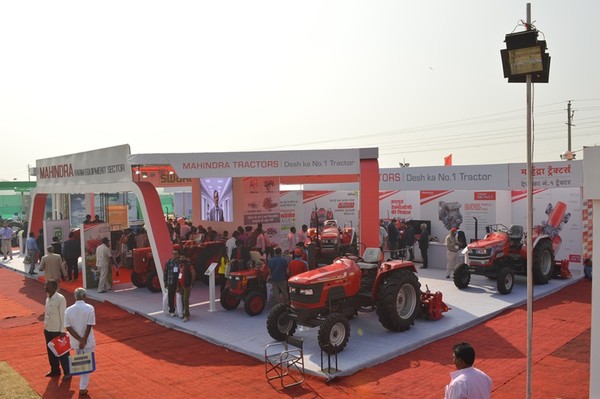
Policies and instruments to promote mechanization in India
Although the internal market has developed over the last few years, reaching huge sale volumes, the demand for agricultural machinery remains very high. The Asian colossus has to meet the demand for agricultural machinery by attracting new investments from abroad and using at its best the instruments available for financing innovation in the primary sector
Six hundred thousands: this is the first number related to the annual sales of tractors which is worth noting when taking into account the figures on the Indian market size of agricultural machinery and equipment. Market share estimates are also significant for other types of machinery, among which 100,000 harvesters, 56,000 motor cultivators, 60-80,000 rotary cultivators, 25-30,000 no-till seeders, 25,000 weeding machines and 4-5,000 combine harvesters. Such numbers suggest a widely mechanized agriculture, but an accurate evaluation highlights a different reality: the overall level of mechanization corresponds only to the 40-45% of the real requirement, with wide increase margins per all cultivation operations. An example for all is given by the estimates concerning harvesting, which is limited to the 5% of the potential, except for wheat and rice threshing, with the percentage rising to 60-70%. It is easy to understand, therefore, that India offers significant opportunities for the manufacturers of agricultural machinery and equipment. For this reason, here follow some brief considerations that might be useful to a businessperson willing to capture them.
First, a consideration concerns the entry method: to establish an activity in India, a businessperson should be able to produce locally, avoiding transport costs and customs tariffs to maintain a competitive selling price. Although the Indian government acknowledges the importance of a higher level of agricultural mechanization, the manufacturing of machinery and equipment for cultivation and harvesting operations (unlike food processing) is not included in Make in India. This programme was established to promote the creation of new production plants with the objective to turn the country into a manufacturing hub on a global level. In general, foreign investments have been simplified if compared with the past, through measures that facilitate new activities in the country. Among them, is the abolition of the Foreign Investment Promotion Board, the government body which, for 25 years, regulated foreign investments since the first reforms that opened India to the international trade. If one wants to establish a new economic activity in a country of more than 3.2 million square km and a population of over 1.2 billion people (the 60% of which lives in the countryside) they should take into account the importance of the development of a distribution and commercial network. That is why it is crucial to find a local partner, well-structured in the territory. Also, in choosing the right type of machine to produce, (within a wide range of products), a businessperson should consider that the Indian agricultural surface is divided into over 138 million properties, (with an average size of 1.15 hectares), the 85% of which consists of small and marginal categories. Looking in detail at the tractors used in agriculture, the predominance of small and medium power machines, (with 88% under 50 Hp), is another factor to be considered. To support farmers, the Indian government provides several rural programmes, which include incentives for the use of machinery and equipment. Among these programmes the National Food Security Mission, the Rashtriya Vikas Yojna, the Mission for Integrated Development of Horticulture and, finally, the National Mission on Agricultural Extension and Technology. Being in India means being able to benefit from these programmes and, as a consequence, increasing commercial opportunities in a country where the majority of farmers do not have enough resources to buy machines, and the private credit sector does not give adequate support. Among the abovementioned programmes, the most interesting one seems the National Mission on Agricultural Extension and Technology which provides a series of measures for the development of mechanization with support to outsourcing, considered as a concrete solution to many critical aspects concerning the allocation of machinery and equipment.








